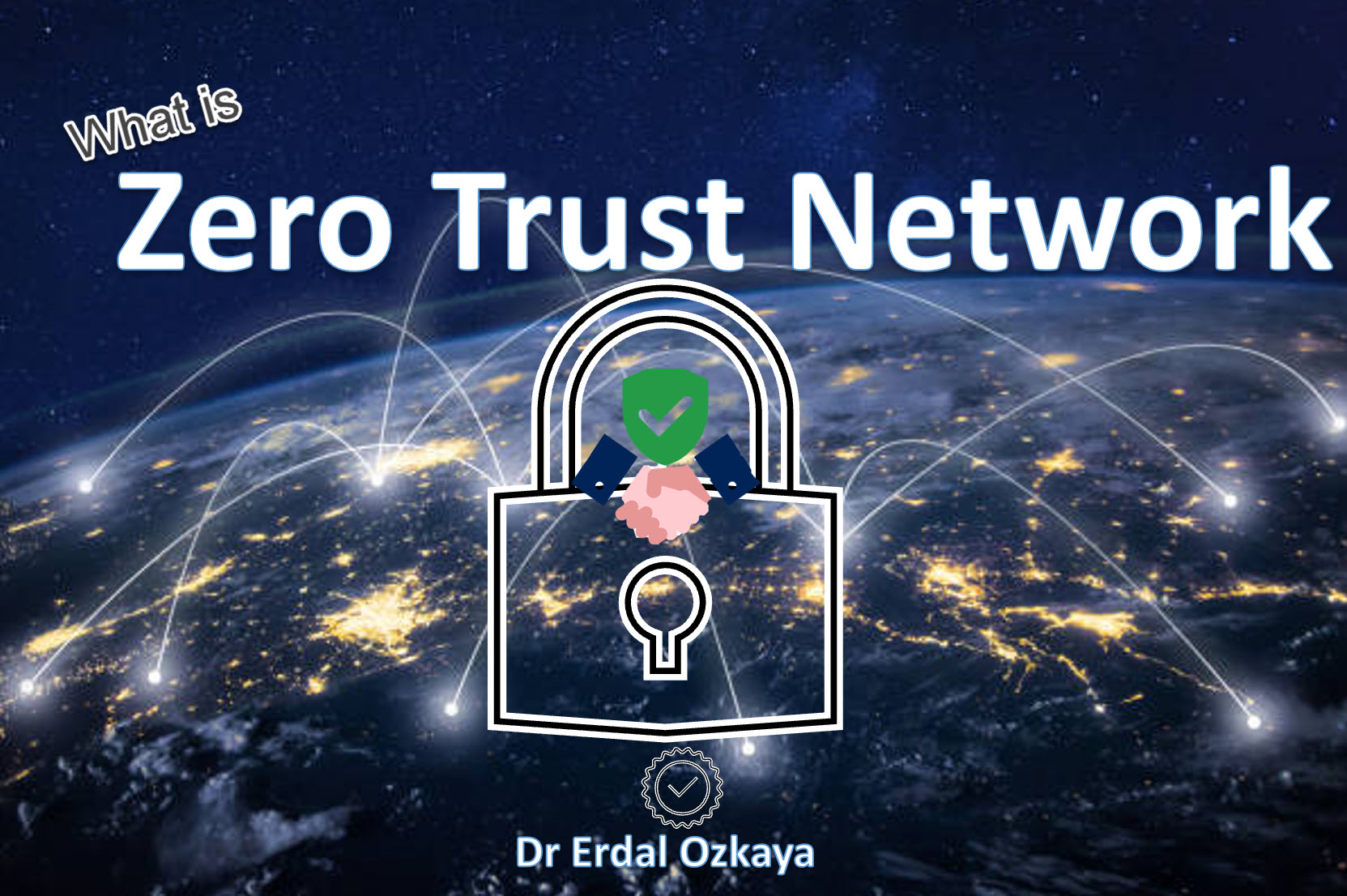
Why you need to put your trust on Zero Trust ! Learn 4 Free
Why you need to put your trust on Zero Trust
To watch the Video in You Tube : https://www.youtube.com/watch?v=aULM8cL_ok4
Video Training : Implementing ‘Zero Trust’: A CISO’s Journey
https://www.erdalozkaya.com/implementing-zero-trust/
ZERO TRUST by Comodo
The old information security model is about perimeter defense: It secures the internal network components from external threats only. Today, this kind of security concept is no longer applicable. A threat can come from within the network itself. This leads to a better security model, which is zero trust network security.
A zero trust security framework assumes that the network is always hostile. It enforces the “never trust and always verify” principle by default. Any user or device trying to get network access must first pass verification. Upon successful authentication, the user or device still only gets limited network access. Restricting access is part of a zero trust network security’s key principles.
You will learn about the four key components of zero trust network security in the next section, as well as the benefits you gain from applying them.
THE FOUR KEY COMPONENTS OF ZERO TRUST NETWORK SECURITY
A zero trust architecture is an information security model/approach. It is not a product, but there are vendors that integrate it with their software. A zero trust network security consists of four key components:
- 1. Visibility
Visibility is the foundation or cornerstone of zero trust network security. You cannot secure what you cannot see. An unknown threat has a greater chance of compromising your network. To avoid this, security controls must be in place so the threats are visible. Not trusting any user and device unless verified counters these unknown threats. - Automation
The implementation of a zero trust network security is challenging and tedious. This task requires dedication in configuring various settings in the network components. Amending existing security policies is also necessary. Automating these tasks is essential, reduces human error, and is a key component of zero trust network security. - Segmentation
Protecting each network asset is mandatory and your top priority. This is the essence of network segmentation or micro segmentation. Dividing your network into smaller segments or zones is the idea here. Securing and managing each segment is tedious but prevents data breaches. The first two key components of zero trust network security will help you here. - Compliance
Payment Card Industry-Data Security Standard (PCI-DSS) is the information security standard for organizations that handle credit card transactions. It is mandatory to comply if you offer e-commerce or accept credit card payments. Applying a zero trust network security helps your business become compliant.
ZERO TRUST NETWORK SECURITY BENEFITS
Here are a few of the benefits you’ll gain from zero trust network security:
| Benefits | Description |
|---|---|
| Zero trust network security lowers the difficulty of the security stack. | Maintaining and managing old equipment is expensive and complicated. You have to tend to every hardware and software component. Doing such technical stuff is tiring and time-consuming. You can avoid such a burden if you use a cloud-based zero trust solution.
A cloud service vendor provides the hardware and software that your business needs. They will maintain, manage, and handle the work for you. This relieves you from stress and gives you peace of mind. |
| Zero trust network security solves the shortage of security skills. | Cybercriminals are eager to steal and sell sensitive and confidential data. There is not enough manpower to combat them. A cloud-based zero trust solution reduces the need to hire more security pros. Your cloud service provider handles and manages everything, including your network security. |
| Zero trust network security protects the data of your business and clients. | An attacker has to pass through many defenses before they can breach your network’s security. Even if they manage to gain entry, there are still restrictions on user and device access. This limits their offensive capabilities. |
| Zero trust network security provides greater protection and end-user satisfaction. | Having a strong password is a must, but a complex one is hard to remember all the time. A cloud-based zero trust solution removes the stress of remembering passwords. It makes use of Single-Sign-On (SSO) and Multi-factor Authentication (MFA). This leads to constant user experience across various computing devices. |
| Zero trust network security detects breaches faster and attains visibility into enterprise traffic. | Location is not an indicator of trust any more. The threat can come from inside the network itself. Never trust and always verify is the main principle here.
You can’t verify what you can’t see. Visibility is the foundation of verification. Any user or device trying to gain network access is visible and trackable, making it easier to spot suspicious activities. |

Conclusion
You learned the definition and components of zero trust network security. You also learned about its great benefits. For more information about zero trust network security, please click here.





